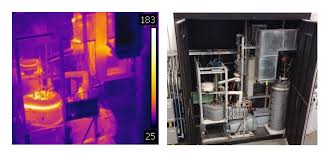
Breaking News
 Saylor Buys Nearly $1B Worth of Bitcoin, Then It Plunges 4%
Saylor Buys Nearly $1B Worth of Bitcoin, Then It Plunges 4%
 The Folly of Establishing a U.S. Military Base in Damascus
The Folly of Establishing a U.S. Military Base in Damascus
 What Are US Troops Guarding (And Dying For) In Syria?
What Are US Troops Guarding (And Dying For) In Syria?
 Trump Claims $18 Trillion in Tariff Revenue, Health Care Costs Down 1000%
Trump Claims $18 Trillion in Tariff Revenue, Health Care Costs Down 1000%
Top Tech News
 This tiny dev board is packed with features for ambitious makers
This tiny dev board is packed with features for ambitious makers
 Scientists Discover Gel to Regrow Tooth Enamel
Scientists Discover Gel to Regrow Tooth Enamel
 Vitamin C and Dandelion Root Killing Cancer Cells -- as Former CDC Director Calls for COVID-19...
Vitamin C and Dandelion Root Killing Cancer Cells -- as Former CDC Director Calls for COVID-19...
 Galactic Brain: US firm plans space-based data centers, power grid to challenge China
Galactic Brain: US firm plans space-based data centers, power grid to challenge China
 A microbial cleanup for glyphosate just earned a patent. Here's why that matters
A microbial cleanup for glyphosate just earned a patent. Here's why that matters
 Japan Breaks Internet Speed Record with 5 Million Times Faster Data Transfer
Japan Breaks Internet Speed Record with 5 Million Times Faster Data Transfer
 Advanced Propulsion Resources Part 1 of 2
Advanced Propulsion Resources Part 1 of 2
 PulsarFusion a forward-thinking UK aerospace company, is pushing the boundaries of space travel...
PulsarFusion a forward-thinking UK aerospace company, is pushing the boundaries of space travel...
 Dinky little laser box throws big-screen entertainment from inches away
Dinky little laser box throws big-screen entertainment from inches away
 'World's first' sodium-ion flashlight shines bright even at -40 ºF
'World's first' sodium-ion flashlight shines bright even at -40 ºF
Molten salt test loop to advance next-gen nuclear reactors

As next-generation nuclear reactors, known as Gen IV power plants, are developed, it is looking more and more likely that they will be of the molten salt variety. These plants swap out radioactive fuel rods and a water-coolant system with a salt slurry mixed with nuclear fuel and offer myriad benefits over their older brethren.
Such reactors are safer than old-school nuclear power plants, for example, because they operate at much lower pressures, making structural stress and failure in the event of an accident less of an issue.
Molten salt nuclear reactors (MSR) also have unique passive methods of preventing nuclear disasters. Some plants are equipped with what's known as a "freeze plug" in the reactor chamber. In the event of a power failure, the system keeping this chunk of salt in a frozen state fails, causing the plug to dissolve. This, in turn lets the salt/fuel slurry drain passively into underground tanks where it safely cools. On the other hand, if a reactor overheats, the expansion in the slurry spreads out the nuclear fuel making it harder for fission to continue, effectively shutting the plant down.
Additionally, molten nuclear reactors are more efficient than their predecessors, and are even potentially able to use waste materials that weren't completely spent in other nuclear processes. They also produce less waste that tends to decompose faster than traditional spent fuel rods and, because of their relatively small size, then can be deployed modularly as needed.
Combating corrosion
All that being said, one of the big challenges of MSRs is that hellishly hot molten salt tends to wreak havoc with whatever it comes into contact with.
Enter the joint project between Idaho National Labs (INL), Southern Company and TerraPower. That project, known as the Molten Chloride Reactor Experiment (MCRE), achieved a major milestone just last month, when it announced that it had used a prototype furnace to create a fuel based on denatured uranium at the rate of 18 kg (39 lb) per batch. That's a far cry from the three and a half tonnes the reactor will eventually need to reach criticality, but it's a start, and the fuel is being produced with 90% efficiency
Now the MCRE project has revealed the successful completion of its Molten Salt Flow Loop Test Bed, which aims to develop a reactor that can withstand the corrosive effects of molten salt.
This closed system is made from stainless steel with a slurry of lithium chloride-potassium chloride salts inside (yes, that is indeed the whole complicated name). As the salts circulate in the system, scientists are able to adjust properties of the slurry – such as temperature – without stopping the flow. This, in effect, means that they can study next-gen nuclear fuels as they circulate in real time.



